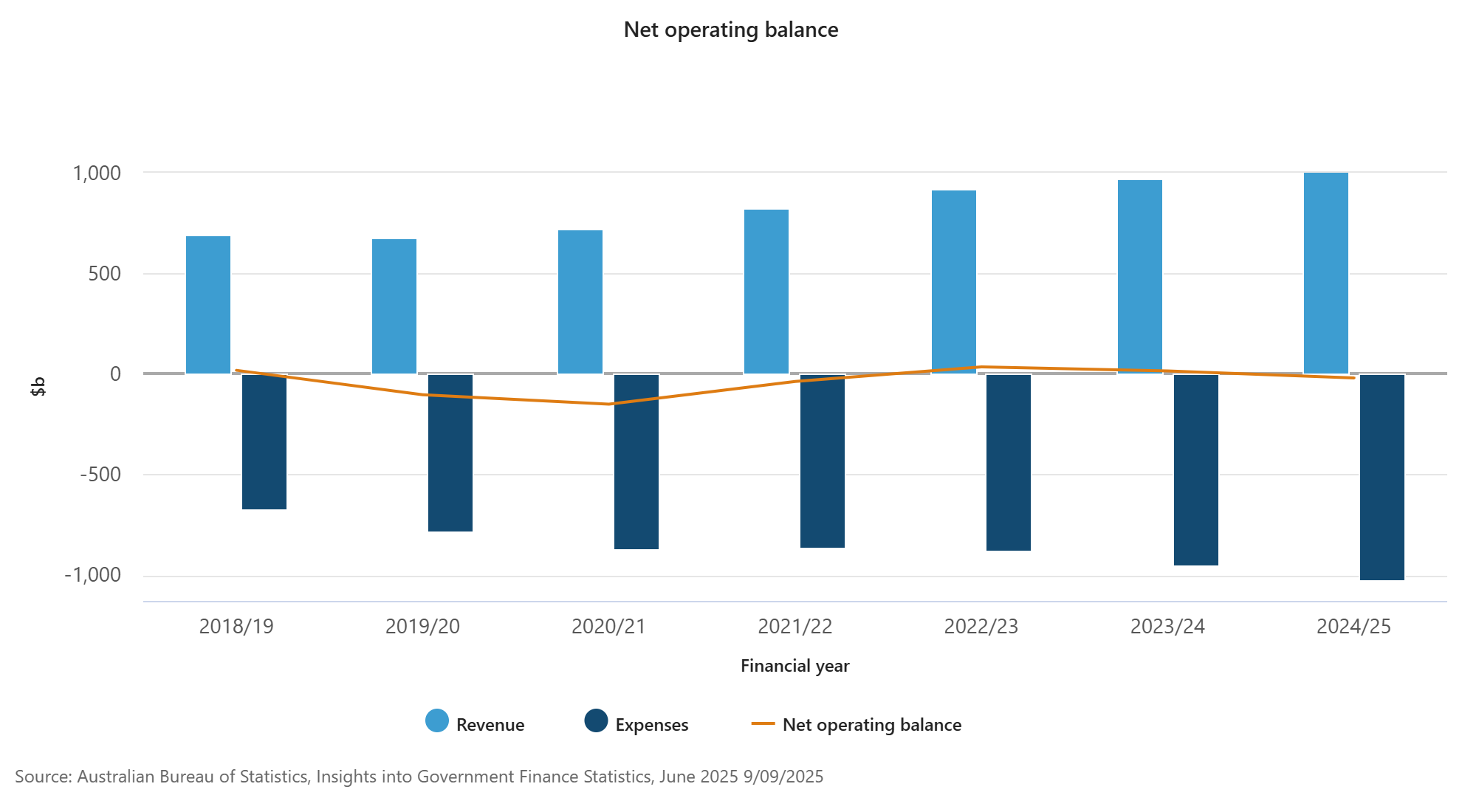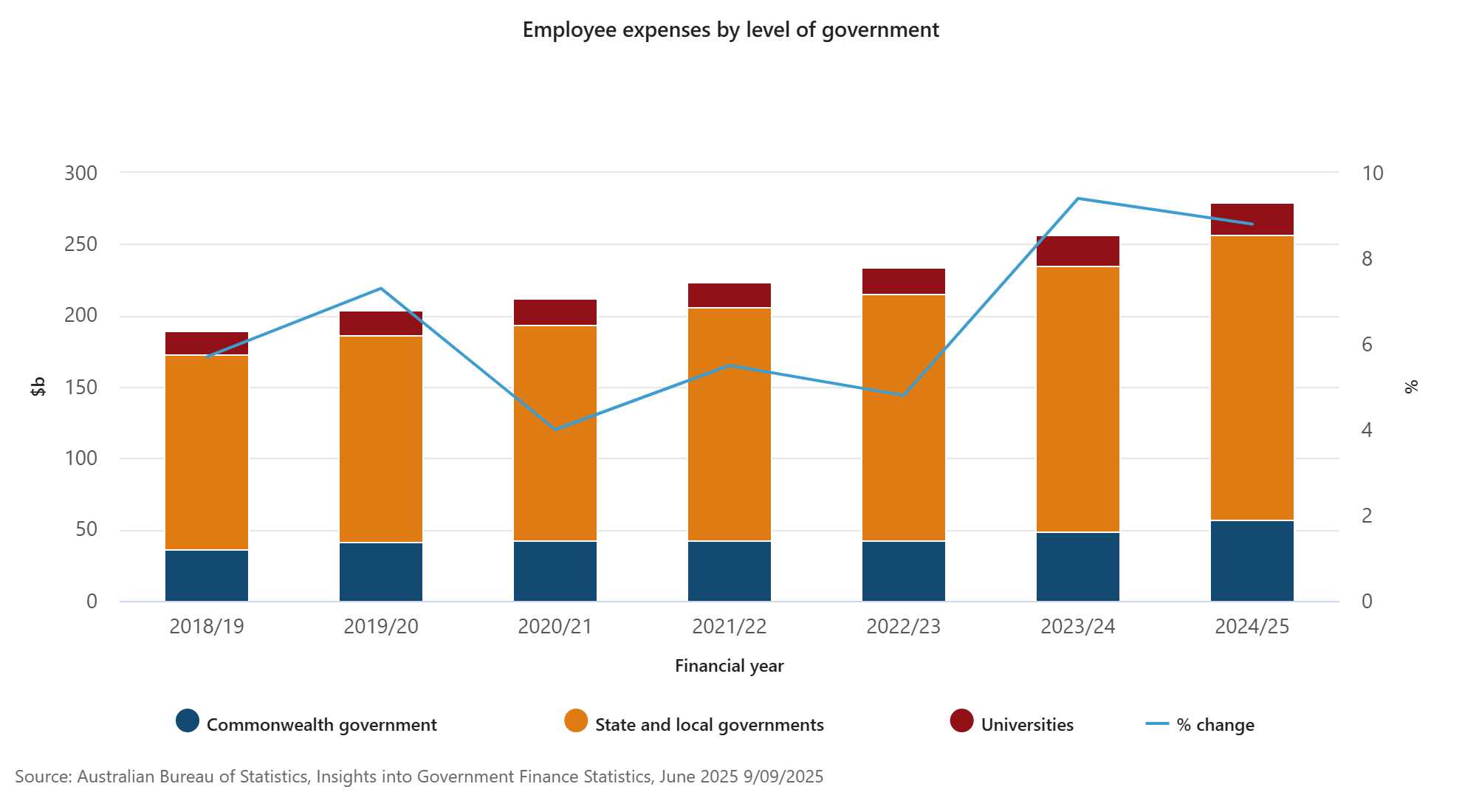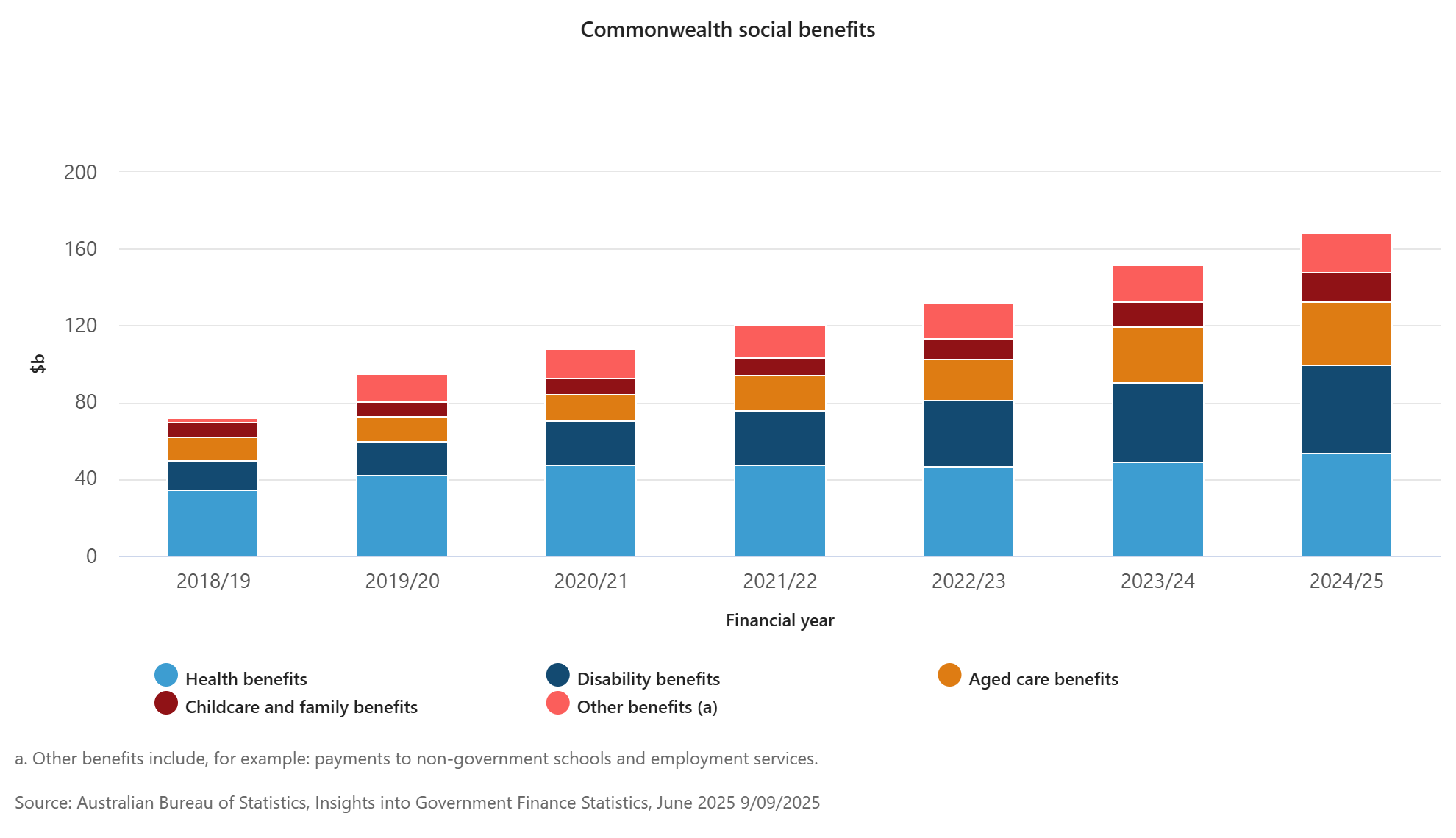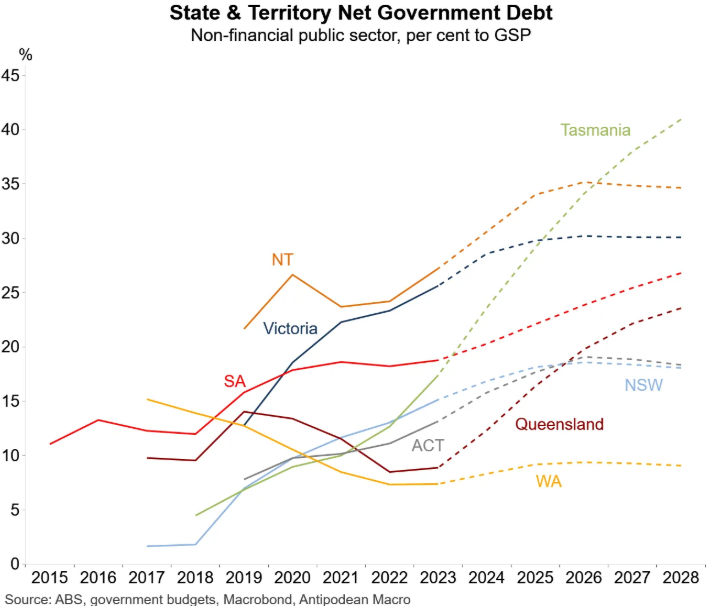Data released by the Australian Bureau of Statistics (ABS) last week showed that the combined recurrent spending of the federal and state governments rose by 7.7% in 2024-25, to $1.02 trillion. In contrast, government revenue increased by just 4% during the financial year.

The increase in recurrent spending was driven by a number of factors.
First, government employee costs rose by 8.8%, driven by state governments.

Second, social benefits jumped by 11.9%, driven by increases in disability, health, aged care, childcare and family, and other benefits.

EY’s chief economist Cherelle Murphy warned that fiscal sustainability across the federal and state governments will be at risk if the current spending trends continue, which could potentially result in credit rating downgrades.
“The report highlighted a decline in recent sources of strong revenue, royalties and mining company taxes, as the sector’s profits were impacted by weaker commodity prices”, she said.
“If these trends continue, and we suspect they will, fiscal sustainability across federal and state governments will be threatened”.
“This means potential credit rating downgrades, as we saw in the Australian Capital Territory last week, more debt, and higher interest costs”.
“This reduces governments’ flexibility and imposes a burden on future generations”, Murphey said.
The following chart from Justin Fabo from Antipodean Macro shows that Australia’s state & territory governments are the most indebted.

This month, S&P Global lowered the ACT’s credit rating to AA, putting it on par with Victoria as the country’s most fiscally fragile jurisdiction.
In December 2020, S&P lowered Victoria from AAA to AA, the lowest rating of any state, due to pandemic strains.
NSW, Queensland, and Tasmania all have AA+ credit ratings, but their outlook is negative, indicating the likelihood of downgrades.
The surge in state debt and their likely downgrades will negatively influence the federal government’s credit rating, since it is the ultimate guarantor of state debt.
Given the federal government’s implicit guarantee of the banking sector, any downgrade of its credit rating may also raise mortgage rates.

